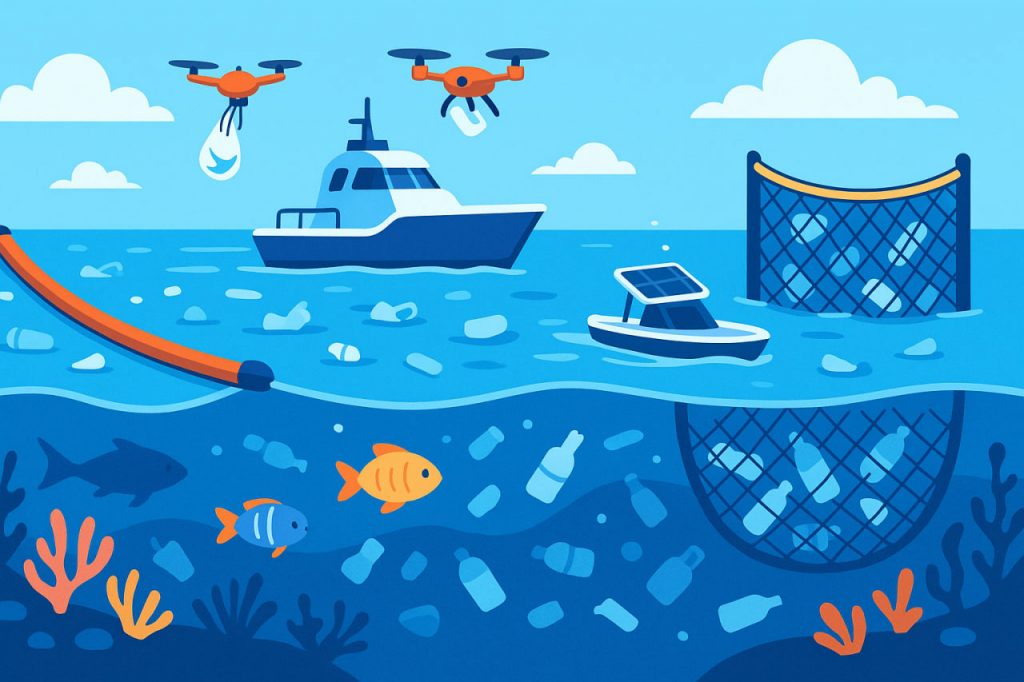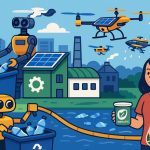The ocean covers more than 70% of Earth’s surface and sustains all life on the planet. It provides food, regulates the climate, and produces over half of the oxygen we breathe. Yet, human activity has turned this vital ecosystem into a dumping ground for plastic, oil, chemicals, and waste. The question of how to clean the ocean has become one of the most urgent challenges of the 21st century — one that requires global cooperation, technology, and awareness.
The Scale of the Problem
Every year, humanity dumps an estimated 8 to 10 million tons of plastic into the ocean. This waste forms massive floating garbage zones, the largest being the Great Pacific Garbage Patch, which now spans an area twice the size of France. Over 1,000,000 marine animals die annually due to entanglement or ingestion of plastic.
Pollution comes not only from visible debris but also from microplastics — particles smaller than 5 millimeters — released from synthetic clothing, car tires, and cosmetic products. These tiny pollutants are now found in seafood, salt, and even drinking water.
Step 1: Stopping Pollution at Its Source
Cleaning the ocean begins on land. About 80% of marine waste originates from cities, rivers, and beaches. The first step is to prevent new pollution through:
- Improved waste management systems, especially in developing countries.
- Bans on single-use plastics, like bags, straws, and cutlery.
- Eco-friendly packaging, made from biodegradable or recyclable materials.
- Public education campaigns promoting responsible consumption and recycling.
If pollution is stopped at its source, cleanup technologies can focus on what is already in the ocean.
Step 2: Large-Scale Ocean Cleanup Projects
Several ambitious projects are already tackling the problem directly:
- The Ocean Cleanup Project uses giant floating barriers that drift with ocean currents, capturing plastics without harming marine life.
- SeaVax is an autonomous solar-powered ship designed to vacuum floating waste and filter it from the water.
- ClearBot, a small AI-driven drone, patrols harbors and rivers, identifying and collecting garbage before it reaches the sea.
These technologies represent the future of marine conservation — scalable, self-powered, and sustainable.
Step 3: Cleaning Rivers Before They Reach the Sea
Since most ocean waste travels from rivers, cleaning them is crucial. Systems like Interceptor (also developed by The Ocean Cleanup) collect waste at river mouths using conveyor belts and solar energy.
Cities such as Jakarta, Manila, and Mumbai are already deploying these systems to intercept thousands of tons of plastic monthly, preventing it from entering the ocean.
Step 4: Biotechnological and Natural Solutions
Scientists are exploring biodegradation methods using bacteria, fungi, and enzymes that can “eat” plastics. Some microorganisms discovered in landfills and oceans naturally digest PET — the main plastic in bottles — breaking it down into harmless compounds.
Additionally, seaweed and mangrove restoration help absorb carbon dioxide and trap microplastics, acting as natural filters for coastal ecosystems.
Step 5: Global Cooperation and Policy
Ocean cleanup requires more than technology — it demands international cooperation. Global agreements like the UN Ocean Treaty (2023) aim to protect marine biodiversity and regulate high-seas activities. Governments must enforce strict regulations on waste disposal, illegal dumping, and shipping industry pollution.
Non-governmental organizations and volunteers also play an important role through beach cleanups, awareness programs, and citizen science initiatives.
Step 6: Everyday Actions That Help
Each person can contribute to ocean cleanup by:
- Reducing plastic use and recycling properly.
- Supporting companies that use sustainable packaging.
- Avoiding products containing microbeads (tiny plastic particles).
- Participating in local cleanups or donating to ocean protection projects.
The collective power of billions of small actions can make an enormous difference.
The Future of a Clean Ocean
With continuous innovation and public engagement, the dream of a cleaner ocean is achievable. Scientists are developing self-repairing materials, biodegradable nets, and even AI-powered satellites that track and predict waste accumulation zones.
If humanity won’t act actively within the next decade, we can disappear from this planet due to climate catastrophes…
Interesting Facts
- The ocean produces over 50% of the world’s oxygen and absorbs about 30% of carbon emissions.
- Cleaning up just 1% of ocean plastic per year could save thousands of marine species from extinction.
- Over 150 countries have already pledged to phase out single-use plastics.
- Coral reefs filter ocean water naturally, but 50% have already died due to pollution and warming.
Glossary
- Microplastics — tiny plastic particles resulting from the breakdown of larger plastic debris.
- Biodegradable — capable of being decomposed naturally by microorganisms.
- The Ocean Cleanup Project — a global initiative using technology to remove floating plastic from oceans and rivers.
- Mangroves — coastal trees that trap sediment and filter pollutants, protecting marine ecosystems.
- UN Ocean Treaty — an international agreement focused on preserving biodiversity in international waters.


